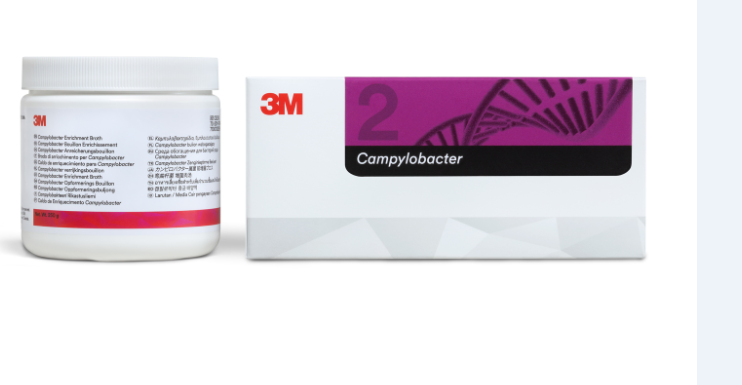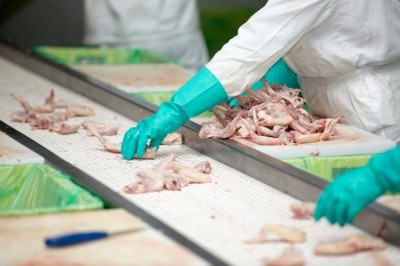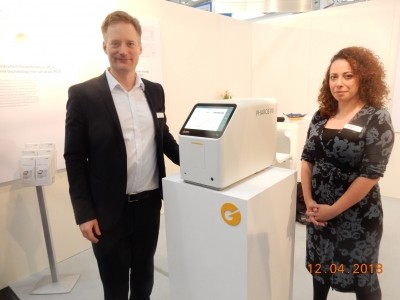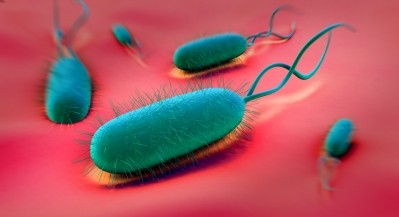3M targets Campylobacter in poultry industry

The 3M Molecular Detection Assay 2 – Campylobacter with CE250 3M Campylobacter Enrichment Broth is for testing of the pathogen associated with poultry production.
The system is designed to identify Campylobacter in poultry matrices including carcass rinses; poultry pieces or parts; raw ground chicken or turkey and poultry organs.
It is also for testing in primary production environments and can be applied to samples from boot covers and swabbed samples from chicken coops.
Internal validation and end markets
Carolina Riba, Global Category Manager at 3M Food Safety, said internal validation encompassed poultry matrices (chicken, turkey, duck, etc.) as most campylobacteriosis infections involve poultry rather than red meat or dairy.
“In dairy, it’s long been established that proper pasteurization thwarts milk-borne infection. While it’s possible to drink unpasteurized milk, pasteurization has become normative throughout the world. In the US, less than 1% of milk production is consumed raw, and the government advises against such,” she told FoodQualityNews.
“That said, the 3M MDA2 - Campylobacter is relevant to the dairy industry in that it has been internally validated for environmental testing in primary production facilities. Environmental testing is often just as if not more important than end-product testing, as the environment is often the source of contamination and cross-contamination.”
The product was developed to help any processor, contract lab, government agency or academic institution that tests poultry samples for human consumption.
Alternatives like PCR, immunoassay and culture methods require complex media supplements such as blood or antibiotics.
Enrichments for these methods need to be incubated under microaerophilic conditions requiring equipment such as anaerobic jars and oxygen scavenging sachets.
Source, formulation and quality of enrichment medium on results
Conventional methods typically require two days of incubation for the enrichment followed by two days of incubation for streak plates to get presumptive results.
Unlike traditional enrichment protocols that can take 11 or more steps the 3M Campylobacter Enrichment Broth requires five steps.
“Testing for Campylobacter in poultry can be tricky as its matrices are complex and its processing contains lots of steps where contamination can occur. Campylobacter is a pathogen that can be found not only in raw meat, but at the primary production-level, and in broiler, carcass and bird parts rinses,” said Riba.
“Moreover, a sensitive DNA-based detection method like the 3M Molecular Detection System is important because there can be a lot of competing microflora in poultry samples. Classic culture-based methods (agar, etc.) are often hard-pressed to accurately confirm the pathogen due to the samples possessing a high and complex microbial load.”
3M Campylobacter Enrichment Broth is ready to use (technicians need to add sterilized water) and incubations are done under aerobic conditions for 22 to 28 hours.
Once enriched samples are analyzed with assay, results can be obtained in 90 minutes or less (30 minutes for lysis and reaction set up and 60 minutes of run time).
Technicians can run testing concurrently with 3M Molecular Detection Assay 2 – Salmonella to perform up to 96 tests of multiple types in one 60-minute run.
Detect one CFU of Campylobacter per sample
Users need an enriched sample, a laptop and the 3M instrument.
“Once the samples are transferred to the instrument and the test is run, presumptive positive results will be displayed on the laptop screen as early as 15 minutes with negative results at 60 minutes. Using isothermal DNA amplification and bioluminescence detection to overcome the limitations of older systems, the assay can detect as low as one CFU of Campylobacter per sample,” said Riba.
3M said the food industry is undergoing major changes to meet safety standards and poultry producers are a part of this movement.
“The USDA along with other agencies around the world are working to establish new standards and policies driving food manufacturers, packagers and service providers to ensure that safety is placed at the forefront.
“Preventing foodborne pathogens depends on integrated systems that assess, monitor, validate and verify the process and environment in which processing, storing and distributing occurs, and it’s always important to keep in mind that test results alone cannot replace good practices or interventions designed to reduce microbial loads to levels of acceptability.”
























